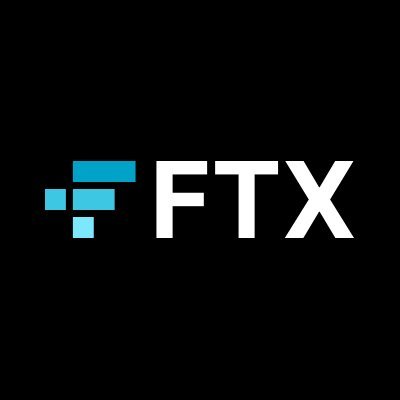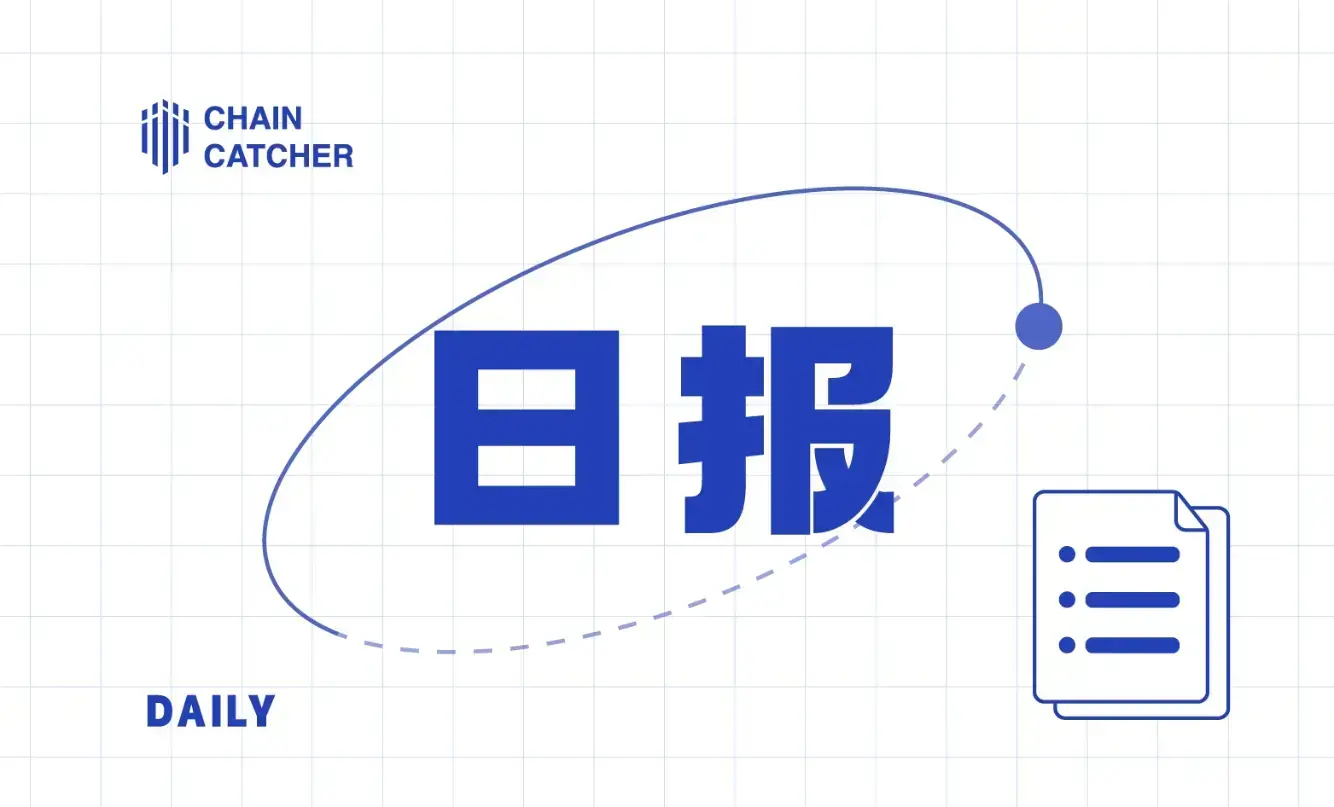Reflecting on the combination of Web3 and sports: Who really needs whom?
Author: DefiOasis, Geek Web3
Editor: Faust

Introduction: The enthusiasm of Web3 companies for sports is excellently exemplified by FTX. Previously, they spent $135 million to acquire the naming rights for the Miami Heat's home arena for 19 years and had Curry invest in FTX as its brand ambassador, while Coinbase, FTX, and Crypto.com directly advertised during the American national event—the Super Bowl. In recent years, fan tokens, star NFTs, and Web3 sports games have also become popular among some fans.
However, with the collapse of FTX and a series of scandals related to Web3, the honeymoon period between the sports world and Web3 seems to have ended quickly. Sports stars previously associated with FTX were implicated, the Heat terminated their naming partnership with FTX, and the Super Bowl event directly banned any cryptocurrency-related companies from advertising in 2023. The dismal performance of Crawley Town Football Club, which introduced Web3 governance, has further led the sports world to question Web3 itself.
At its core, is it that sports events need Web3, or does Web3 need sports events? Do the original products of Web3, such as cryptocurrencies and DAO governance, really make sense when combined with real-world business scenarios like sports? This article by DefiOasis will critically discuss this topic, using objective facts to explain why the relationship between sports and Web3 is like "forcing a melon to ripen."
The Collision of Sports and Web3
Throughout history, humanity has had an instinctive yearning for competitive sports activities, even reflected in the Bible when discussing the origins of "Israel" (the Jewish patriarch Jacob wrestled with a messenger of God and was recognized, thus being given the name "Israel," meaning "one who wrestles with God"). In modern times, sports have gradually become a mainstream form of entertainment with a massive market.
In 2022 alone, the NBA's revenue exceeded $10 billion, while the NFL's revenue reached as high as $18.6 billion; according to Deloitte's "2023 Football Financial Report," the annual revenue of Europe's top five football leagues exceeded €17.2 billion, and FIFA's World Cup financial report showed that the 2022 Qatar World Cup generated $5.769 billion in revenue, attracting over 5 billion viewers, accounting for 62.5% of the global population.
The strong appeal of sports naturally attracts many Web3 companies. From the OKX pitchside paint at Manchester City's Etihad Stadium, the naming of the Lakers' Crypto.com Arena, to Messi's partnership with Bitget and Suarez's collaboration with Binance, it all shows Web3 companies' determination to connect with sports star fans. But beyond inviting stars for endorsements, Web3 has also spawned unique scenarios like fan tokens and star NFTs.
The Sports Fan Economy: From Collectibles to Gamified NFTs and Fan Tokens
It can be said that NFTs are one of the best ways to bring sports IP onto the blockchain, with mainstream sports NFTs focusing on collectibility and gamification, appealing to young people with their inherent social and trendy attributes. The well-known accounting firm Deloitte once optimistically predicted that the trading volume of sports-related NFTs would exceed $2 billion in 2022, but according to data from LGDoucet, founder of TheFirstMint, the trading volume of sports NFTs in the primary market was about $100 million, and in the secondary market, about $700 million, which was even less than in 2021.
The Decline of Collectible NFTs

(In the first half of the year, the leading sports platforms were still represented by game NFTs like Sorare and collectible NFT platforms under DapperLabs)
Collectible NFTs were the first step for Web3 to enter the sports circle. Previously, football star Cristiano Ronaldo collaborated with Binance to issue multiple personal series of NFTs. Today, we can still see the shadow of collectible NFTs in traditional sports, such as trading cards. Whether collectible NFTs or physical cards, as well as star cards featuring players, their value depends on the star's popularity.
Among physical trading cards that auction for over $1 million, there are many big-name stars from various fields, such as Mickey Mantle, LeBron James, and Patrick Mahomes. The rarity and aesthetic design of the cards add to their value. When collectibles are presented in video form, whether they feature iconic moments of the stars also determines their value.

(Iconic moments of stars add value: The highest price for LeBron James' shot that made him the all-time leading scorer was nearly $20,000)
In the field of collectible sports NFTs, DapperLabs is the undisputed leader, with its collaborations including NBATopShot, NFLAllDay, LaLiga, UFCStrike, etc., covering the needs of fans from different top sports leagues. It can be said that DapperLabs and its collaborative products are the culmination of Panini-style card collecting.
Among them, NBATopShot is the most popular, leveraging the NBA's official endorsement and fan base, NBATopShot once reached a daily trading volume of over $40 million at its peak and consistently ranked among the top five in the NFT trading market. However, the good times did not last long, as NBATopShot soon declined due to reasons including an oversupply of star cards in a short time, iconic moments being limited to current players, and the parent company's lawsuit from the SEC.

(The NBA is a league with high attention to sports NFTs)
It can be said that the decline of collectible NFTs was inevitable. Similar to niche collectibles like stamps, the players of sports collectible NFTs are mostly an intersection of sports fans and Web3 users. When the NFT market cools down, the lack of influx from outside players leads to a situation where the trading market is filled with items that have no market. Along with the downturn of the NFT market and the operations of project parties, the activity of NBATopShop has remained in a low valley since peaking in 2021.

(With the cooling of the NFT market and the operations of project parties, the activity of NBATopShop has remained in a low valley since peaking in 2021)
The Gamification of Fantasy Sports NFTs
Despite the decline in the activity of sports collectible NFTs, sports themselves carry a massive fan base, especially in top global sports leagues. With the entry of platforms like DraftKings Reignmakers and Sorare, the gameplay of sports NFTs has been upgraded, injecting more gaming elements. From the decline of collectible NFTs to the boom of gamified NFTs, sports fans only need a trigger point to fall into a frenzy.
According to CryptoSlam data, in the month leading up to October 24 this year, there was a significant trend of NFT trading shifting from PFP to gamified NFTs, with two sports event game NFTs appearing in the top five, surpassing well-known NFTs like CryptoPunks and MAYC.

Sports games are typically dominated by realistic simulation competitions and management simulation gameplay. However, current mainstream Web3 sports games focus more on "fantasy sports" management simulation gameplay centered around NFTs. This is a type of game where players manage teams from the perspective of a club manager, partly because the realistic simulation games developed by sports gaming giants like EAFC and F1 are already very mature. These games have gained wide recognition among sports players in terms of cost investment, visual presentation, and model maturity, establishing a strong market share on PC and mobile platforms. Therefore, Web3 sports games starting from scratch face significant challenges in carving out a share in this field.

(The changes in game NFTs represented by Sorare and collectible NFTs represented by DapperLabs over the past two years reflect the trends of both: https://thefirstmint.substack.com/p/the-state-of-nft-sports)
Web3 sports games like DraftKings, Sorare, and Ultimate Champions have chosen the "fantasy sports" gameplay, which perfectly combines real matches with NFT elements, allowing players to predict player and team statuses to select suitable lineups for simulated matches. This model is not new in the sports gaming field, as similar mechanisms have already formed in mature simulation games like FM (Football Manager) and basketball fantasy leagues.
However, unlike before, the core of Web3 sports games lies in star card NFTs, which players can trade in the secondary market, financializing star cards and attracting a large number of speculators. Interestingly, the growth potential and rarity of players themselves affect the prices of player cards; for example, a rising star early in their career has significant speculation potential, while a veteran nearing retirement is the opposite. Earlier this year, the star NFT of NBA's new generation player Giannis Antetokounmpo was sold on Sorare for 113.888 ETH (approximately $186,000).
There are two key points for the long-term playability of "fantasy sports."
1. Maintaining Timely Data Updates
Unlike most game fans, the appeal of sports games primarily comes from sports fans. Deep sports game fans have a high overlap with real-world sports fans. From EAFC (formerly FIFA) to NBA2K, although they have gradually evolved from stunning debut works to routinely criticized products, they still maintain strong revenue-generating capabilities, among which timely updates of game data are the main reason for their sales.
In simulation sports games like DraftKings Reignmakers and Sorare, players need to understand real player data and grasp the tactics and overall status of teams, effectively attracting passionate fans. For such players, once enough stickiness is formed, timely updates of lineup data are more important than changes in details like visuals, actions, and gameplay diversity. Although most sports games only make minor adjustments each year, players' tolerance is quite high, and they are willing to pay for more timely sports data. If player and team data lack timeliness, the appeal of such games will significantly decrease.

2. Revenue Model Favoring Rarity
"Fantasy sports" games reference the preference of MyTEAM and Ultimate Team players for star rarity, by dynamically adjusting the player card pool to generate revenue. This includes frequently raising the card pool limits (player ability values, salary cap limits, etc.), encouraging players to purchase card packs and participate in lotteries, or directly acquiring desired players through in-game currency purchases.
However, the mainstream "fantasy sports" gameplay of Web3 sports games also has some flaws. For example, due to the long game cycle, it leads to weak continuity, making it difficult to ensure players maintain sufficient attention throughout a complete season lasting up to a year. Additionally, the "entry fee + prize pool" gameplay is often considered to have gambling implications, such as the entry fee in the game, selecting players (similar to betting), and sharing the prize pool resembling gambling behavior. On the surface, players need to rationally predict player performances, but in reality, luck plays a significant role. Furthermore, the high entry barrier of the game is not friendly to new fans or non-fans.
Aside from fantasy sports games like Sorare and DraftKings, other sports blockchain games have yet to make waves.
Previously, FIFA and EA's relationship broke down due to exorbitant renewal issues, leading to the launch of four different modes of Web3 games, but these games have not attracted enough interest from fans. Specifically, there are significant gaps in gameplay, visual presentation, and player likeness rights compared to mature Web2 sports games. In the future, as AAA-level sports games like "Goals" attempt to enter Web3, this situation may improve.
New Directions for Sports NFTs
In addition to the above scenarios, new ways of combining NFTs with real sports are also excellent attempts for NFTs to transition from virtual to tangible, such as NFT tickets.
Ticket NFTs have precedents in the music field, where their main function is to prevent ticket scalping and counterfeiting. However, most ticket NFTs are one-time use and have a relatively short validity period; once the NFT ticket is used for entry, it only retains collectible value, but apart from rare NFT ticket stubs (like a star's debut or collaboration with a big name), their value is quite limited.
Sports events provide the possibility for NFT tickets to have long-term use—such as season tickets for a team's home games. For clubs with a large fan base, season tickets are often "hard to come by." Ticket NFTs can serve as a type of team POAP, allowing clubs to launch loyalty point programs similar to "Odyssey," for example: purchasing team merchandise, verifying attendance during the season, etc., to retain or eliminate season ticket holders and allocate seats for the next season's season tickets.

Clubs can also provide benefits to high-scoring NFT holders, such as signed player merchandise, offline meet-and-greets, etc. In July last year, Paris Saint-Germain sold three NFT tickets worth over $220,000 for a friendly tour in Japan, granting buyers unique privileges.
Although NFT tickets are a great solution, sports fans cover all age groups, and the audience for NFTs is small, coupled with the fact that many sports fans are older and more conservative, making them slow to accept new things. At this stage, ticket NFTs are more suitable for small-scale promotions.
NFT Governance
The decentralized nature of Web3 makes democratic decision-making for teams possible. Last year, Chelsea's former owner Abramovich had to sell his stake in the club for political reasons, and some fans hoped to protect the club's interests during this transitional period, so they initiated crowdfunding to purchase 10% of Chelsea's shares, establishing ChelseaDAO with the hope of participating in key decisions for the club in the future.

(During Chelsea's turbulent period, fans hoped to raise funds to establish a DAO organization to take over some club affairs)
For various reasons, ChelseaDAO ultimately did not succeed, but not far away in England, Crawley Town Football Club has initiated a small democratic "revolution" through NFTs: a Web3 capital called WAGMI United acquired this football club in the English Football League Two, allowing fans to participate in team building through Web3 governance (with NFTs at the core), introducing voting to decide on player recruitment positions, and allowing season ticket holders and NFT holders to vote together.
Although this management approach is democratic, it seems to have little relation to the club's performance, as Crawley Town experienced ups and downs during the season, changing coaches multiple times, ultimately finishing in a difficult 22nd place, barely avoiding relegation.
The poor performance of Crawley Town may be related to fans' lack of professional knowledge in sports management, which is a common issue with DAO management—community voting often relies more on common sense than on professional knowledge. Additionally, due to information asymmetry, the club's daily operations and locker room management cannot all be fully known to the outside world.
It is foreseeable that when a club hands over overall decision-making to a fan DAO, this lack of innovation and long-term perspective in democratic management is unlikely to improve the club's performance.
Club Fan Tokens: A New Attempt at Empowering Fans
In addition to NFTs, fan tokens are another business model related to sports fans. Compared to holding illiquid NFTs and passively bearing price fluctuations, fan tokens actively grant governance rights to assets, with fan groups previously hoping to operate clubs through "DAO + Token." Fan tokens provide such opportunities, allowing fans to participate in some governance activities, such as deciding the captain's armband for a match, designing the club bus, and selecting warm-up songs, giving fans a voice in certain matters.
In this model, clubs can also benefit. Chiliz, as a leading Web3 sports fan project, has incubated fan tokens for multiple clubs, including AC Milan (ACM), Atlético Madrid (ATM), and Tottenham Hotspur (SPURS). Chiliz's incentive platform Socios.com generated $12 million in revenue in 2021 through fan tokens, and clubs collaborating with these fan tokens can receive a share, providing new revenue streams for the teams.
For example, on the day FC Barcelona's fan token was launched in 2020, it sold out, generating $1.3 million in sales, part of which was shared with the club, adding to its financial income.

(Socios.com has established partnerships with multiple sports clubs)
However, the revenue from fan tokens has limited financial benefits for clubs; broadcasting rights, match days, and real-world commercial activities remain the primary sources of income for sports clubs. Taking FC Barcelona, which faces financial difficulties, as an example, according to Deloitte's Football Money League data, the club's revenue in 2022 was nearly €640 million, whereas even the revenue generated by Socios.com for all collaborating teams in 2021 was just a drop in the bucket.

(Breakdown of FC Barcelona's revenue in 2022: Source: "Deloitte Football Money League 2023")
At the same time, fan tokens have also become "fans generating power through love, and non-fans as speculative targets."
On one hand, the matters that token holders can participate in are limited, with few opportunities each season, and they are often inconsequential; major decisions are still managed by the club's executives. On the other hand, the long-term investment value of fan tokens is lacking, reducing them to a form of disguised gambling. If collectible star NFTs might still be sold at high prices due to rarity, fan tokens lack a value anchor, and even the club's league position and match performance can affect token prices.
During the UEFA Euro 2021 and the 2022 World Cup, different teams' fan tokens experienced price fluctuations at various stages of the matches. Even during the off-season, a team's transfer operations or the departure of a star player can impact token prices. It can be said that these meme-like fan tokens are essentially guided by fan emotions.
The Winter of Web3 and Sports IP
In the past, Web3 sports projects actively launched advertising displays, NFTs, fan tokens, metaverse games, and other scenarios targeting fans, providing rights and conveniences for fans, but this did not convince them.
Firstly, the concept of the fan group itself is complex; sports fans generally cover all age groups and include people with varying cultural backgrounds and ages, making it a lengthy process for most of them to accept new concepts.
Secondly, having witnessed the introduction of external capital into several European giants like Manchester United and AC Milan, leading to years or even decades of turmoil due to the management approach of publicly listed companies, traditional European fans are relatively resistant to external capital's involvement in team affairs, and the still not widely understood Web3 capital is even more so. Although this does not mean that Web3 capital's investment in teams is doomed to fail, at least the failure of Crawley Town has left a deep impression on fans.
However, sports clubs have a massive fan base, which is why Web3 capital is reluctant to give up on sports projects. But for Web3 to gain recognition from fans, it not only needs to truly benefit them but also must first prove its own value.
In the 2021-2022 season, the crypto industry provided approximately $130 million in sponsorship to the NBA, becoming the second-largest sponsorship category that season, while major sports brands like Adidas and Nike have also entered Web3 in recent years. Just as Web3 and sports were entering a honeymoon period, a series of scandals including the collapse of FTX implicated stars like Tom Brady and Stephen Curry, who had endorsed FTX, and even the partnership between the Miami Heat's home arena and FTX was terminated. To make matters worse, the bankruptcy of Voyager and its partnership with the Dallas Mavericks also collapsed, which stigmatized "Web3" in the sports world and sharply declined its reputation.
The crypto industry aims to build a massive commercial empire through sports events, but the continuous stream of negative news has not only harmed its image but also dragged some people in the sports circle down with it, forcing the sports industry to cautiously face Web3 capital and deepening the gap between them.
Does Web3 need sports fans, or do sports fans need Web3? While it is often said that the combination of Web3 and traditional sports can bring new revenue to clubs, compared to mainstream revenue sources like ticket sales, broadcasting, and fan merchandise, it is negligible; in terms of visibility, Web3 capital seems to need to leverage sports events for publicity to expand its influence. However, whether in terms of influence or revenue, Web3 and sports IP have not yet formed a "1+1>2" effect. Moreover, from the perspective of seeking investors, traditional sports clubs show a more pronounced preference for traditional capital, while Web3 capital represented by FTX clearly lacks this stability.
References:
https://thefirstmint.substack.com/p/the-state-of-nft-sports












